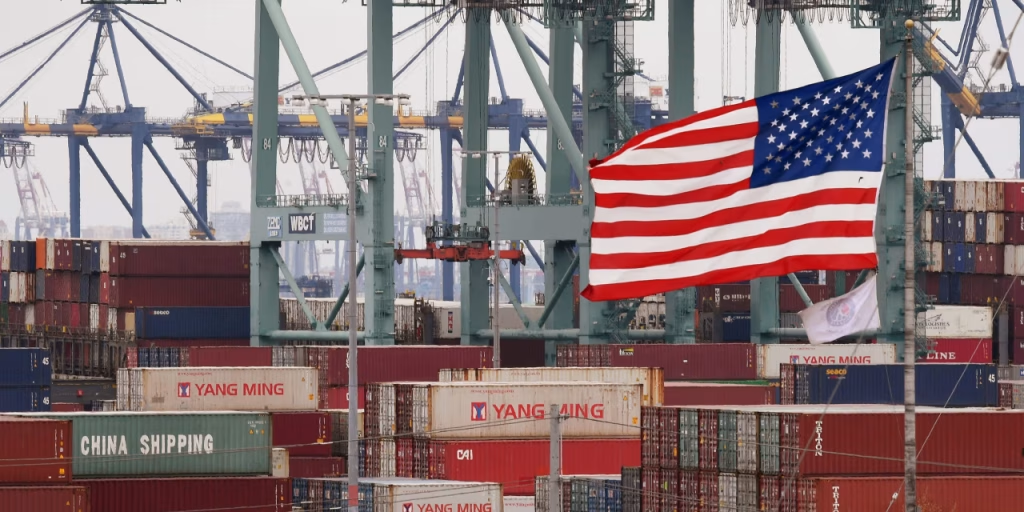The European Commission has significantly lowered its economic growth forecast for the eurozone in 2025, citing mounting global trade tensions fueled by U.S. President Donald Trump’s renewed tariff campaign.
According to the revised projections released Monday, the eurozone’s economy is now expected to grow by just 0.9% in 2025 — a steep drop from the previous estimate of 1.3%.
The European Union pointed to “a weakening global trade outlook and higher trade policy uncertainty” as key drivers behind the downward revision.

The outlook for 2026 was also downgraded, from 1.6% to 1.4%, underscoring growing concerns over the long-term impact of protectionist policies and geopolitical instability on European economies.
READ ALSO: Ukraine Endures 8-Hour Russian Drone Assault in Overnight Attack
EU Economy Commissioner Valdis Dombrovskis acknowledged that while growth will persist, it will do so at a “moderate pace,” supported by a resilient labor market and increasing wages. However, he stressed the urgency for the EU to take decisive steps to enhance its global competitiveness.
The stark shift in the forecast comes as President Trump imposes sweeping trade tariffs on foreign imports. The EU has been directly targeted by a 25% levy on steel, aluminum, and autos, while a broader 20% tariff on most EU goods was announced earlier this year.

Although implementation of that measure has been paused until July to allow for negotiations, the administration has maintained a “baseline” 10% tariff on global imports, including those from the EU.
The European Commission also dealt a blow to Germany’s growth prospects — forecasting zero growth for 2025. This is a sharp revision from last year’s estimate of 0.7% and a worrying sign for the bloc’s largest economy.
READ ALSO: Joe Biden Diagnosed with Advanced Prostate Cancer
“The risks to the outlook remain tilted to the downside,” Dombrovskis warned, highlighting the growing urgency for Europe to strengthen its business environment in the face of stiff competition from China and the United States.

Trade tensions aren’t limited to the U.S. and Europe. The EU noted the lingering effects of the U.S.-China trade war, which saw both countries exchange heavy tariffs before agreeing to temporary reductions. While the final tariff rates between the two global powers were lower than initially feared, they remain high enough to disrupt global trade flows.
Adding to the uncertainty, the Commission also cited the rising frequency of climate-related disasters — such as wildfires and floods — as a potential drag on economic performance.

Despite the gloomy growth outlook, inflation across the eurozone appears to be stabilizing. The Commission expects inflation to ease to 2.1% in 2025 — unchanged from earlier projections and nearly aligned with the European Central Bank’s 2% target.
Inflation, which soared to double digits in late 2022, had dropped to 2.2% in April. The 2026 inflation forecast has also been lowered to 1.7%, down from 1.9%.
Still, Brussels cautioned that further escalation in global trade tensions could reignite inflationary pressures, potentially derailing the fragile recovery.

As Europe braces for a more turbulent economic horizon, policymakers are shifting their focus from climate initiatives to competitiveness — aiming to ease regulatory burdens and bolster the bloc’s resilience amid increasingly volatile global conditions.
Discover more from Scoop Hub
Subscribe to get the latest posts sent to your email.

